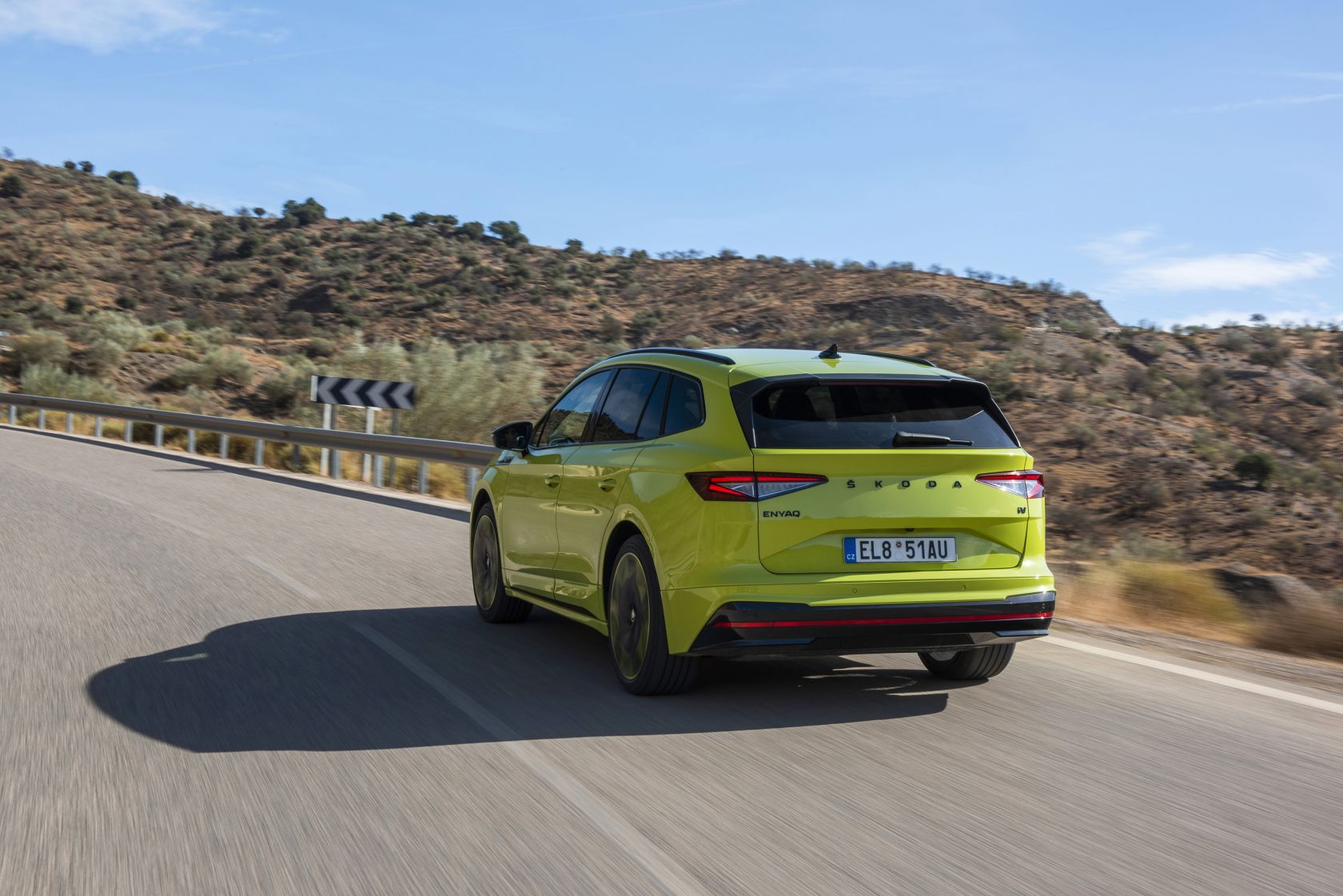What is it?
Skoda’s vRS models have always walked a meticulous
line between added performance and everyday usability. Cars like the Octavia
vRS have shown themselves to be very capable to drive, but equally just as good
to live with on a day-to-day basis. They have, however, always felt a little
bit ‘more’ than just a standard model.
So it was only a matter of time until Skoda gave
the vRS treatment to its flagship Enyaq iV electric SUV. Could incorporating a
range of changes inside and out be the start of a new shift for Skoda and vRS?
Let’s find out if that’s the case.
What’s new?
The Enyaq vRS is designed to sit at the very top of
the range. Here, we’re looking at it in standard SUV form, though you can also
get it as a sleek-looking Coupe-styled version, which brings a slight boost in
range without too much cutback in practicality.
And in typical vRS fashion, the external changes
aren’t all that dramatic. Yes, it comes with Skoda’s slightly ‘look-at-me’
Crystal Face – which incorporates LED bars into the front grille – but there
aren’t too many aesthetic tweaks to differentiate it from the standard Enyaq.
It’s subtle, even by vRS standards – there aren’t even any sporty badges on the
boot, which is something we feel most buyers would want.

What’s under the bonnet?
Though the regular Enyaq iV can be equipped with a
variety of motor and battery setups, the vRS gets just one. Its 295bhp
twin-motor setup makes it the most powerful Skoda on sale today and results in
a 0-60mph time of 6.3 seconds. It’s around 35bhp more than you’ll get in the
next most-powerful Enyaq and brings a 0.6 second saving off the 0-60mph time,
too.
In terms of range, Skoda says that the Enyaq vRS’
77kWh battery will bring a range of up to 321 miles, while the ability to
charge at speeds of up to 135kW (the same as the standard Enyaq) means that a
0-80 percent charge could be completed in around 35 minutes at a rapid
charger. You’re looking at around 13 hours for a 0-100 per cent charge at a
7.2kW home wallbox, too.

What’s it like to drive?
Skoda’s vRS models traditionally differentiate
themselves from the rest of the range through their heightened performance and
sharper more focused handling. There’s not quite the same level of difference
with the Enyaq, however, as in vRS form it doesn’t feel noticeably perkier
compared with the next most-powerful version.
The ride, though 15mm lower at the front and 10mm
at the rear, is the same as you’ll find on Sportline models and still remains
troubled by low-speed bumps and potholes, just as it does on the non-vRS model.
At a cruise it’s excellent, mind you, and at higher speeds the Enyaq feels
noticeably quiet and refined. There just doesn’t seem to be too much of ‘vRS
feel’ – it’s just like a regular Enyaq (which is already very good) but with an
ounce more power.

How does it look?
The Enyaq gets a light dusting of vRS-specific
touches to help differentiate its look from the rest of the range. There are
the badges on the flank, while the eye-catching ‘Hyper Green’ colour is
reserved for vRS models only. The bumpers have been redesigned, too, and at the
rear there’s a full-width red reflective strip, which is a signature touch on
all vRS cars across Skoda’s range.
As mentioned, the ‘Crystal Face’ comes fitted as
standard – and it’s definitely a talking point – with its 131 individual LEDs
giving the front of the car a futuristic feel. All cars get 20-inch alloy
wheels as standard, though you can upgrade them to 21s should you want. It
seems odd to have no rear vRS badging, though, and it could’ve even been
integrated into Skoda’s iV electric badge too.
What’s it like inside?
You can get the Enyaq vRS in one of two interior
specifications – Lounge and Suite. The former brings black Alcantara and
lime-coloured piping, while Design has a more traditional focus with black
perforated leather seats and grey contrast stitching. We’d argue that Lounge
brings the sportier feel, with the standard-fit bucket seats proving to be both
brilliantly supportive and great to look at as well. Everything, as we’ve found
in the regular Enyaq, is fitted together brilliantly with good material quality
across the board.
Boot capacity remains unaffected in the vRS, so
you’ve got a healthy 585 litres to play with, rising to 1,710 litres if you
fold the rear seats down. Rear-seat legroom is good, too, while headroom will
prove more than plentiful for most.

Verdict
The Enyaq vRS leaves us feeling a little perplexed.
It feels, in truth, more like a tip-top trim level, as opposed to a dedicated
performance model. Whereas the Octavia, for example, feels noticeably different
in vRS form to the standard car, the Enyaq’s transition isn’t quite as
pronounced. This could be a tricky act to pull off across the EV segment as a
whole, mind you, as you only need to fit a new exhaust to a petrol-powered car
to elevate the experience, but that’s not an option on an electric vehicle.
There have been tweaks made here and there, but the
biggest problem that the vRS has is that the standard Enyaq is already so
accomplished. Think of it more as a specification rather than an outright
performance model, though, and the vRS fits its role at the top of the Enyaq
range.
Facts at a glance
Model: Skoda Enyaq iV vRS
Engine: Dual electric motors
Power: 295bhp
Battery size: 77kWh (usable)
Torque: 460Nm
0-60mph: 6.3 seconds
Top speed: 111mph
CO2 emissions: 0g/km
Electric range: 321 miles










